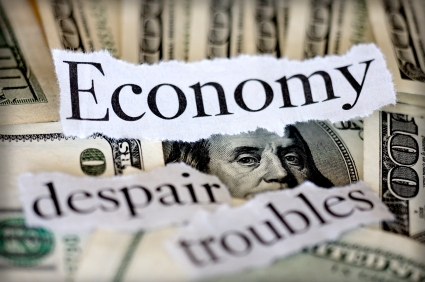Secondary effects of current economic crisis
>> Monday, February 2, 2009
By Baljeet Kaur
Global risk aversion will continue as the impact of the crisis extends to economies in part of the world
DESPITE Asean countries’ minimal exposure to the financial losses stemming from the US subprime crisis, the secondary effects of the global financial crisis on the regional economies cannot be downplayed. The meltdown of financial markets since the fourth quarter of 2008 has underscored the point that 2009 will see a continuation of global risk aversion as the subprime crisis broadens and its impact extends to economies in this half of the world.
That most countries in the region, such as China, Taiwan, Singapore, Thailand and Malaysia, have outlined stimulus packages in recent months reflects the urgent need for swift action to avert a protracted slowdown in this part of the world. We project Asia-Pacific’s gross domestic product (GDP) growth to slow to 5.3% in 2009 from the 7% estimated for 2008, with growth drivers being mainly China (7%) and India (6.8%). Growth will remain resilient in Asean-5, with GDP targeted at 3.3% in 2009 (2008: 5.0%), driven by Malaysia, Indonesia and Vietnam.
Malaysia’s GDP growth is projected at 3.5% in 2009 (2008: 5%), Indonesia at 4.5% (2008: 6%) and Vietnam at 6% (2008: 6.8%). In contrast, we project a recession for Singapore, with growth to contract by 1.2% in 2009 (2008: 1.2%).
Asian economies are now experiencing larger downside risks to growth given that the United States, European Union (EU) and Japan have entered a recession. Lower commodity prices, particularly for economies with larger shares of agriculture contributions to growth, are also a growing concern. The volatility in currency and regional financial markets will continue in the coming months as the re-pricing of credit risk and risk aversion towards emerging markets result in more portfolio capital outflows.
Governments in the region have been quick to respond to the deepening and broadening effects of the crisis by initiating interest rate cuts and implementing other monetary policy tools such as direct liquidity injections, reductions in cash reserve ratios, guaranteeing of foreign exchange debt of domestic financial institutions and establishing foreign exchange swap facilities. On the fiscal side, many countries have announced a rash of stimulus measures to pump prime their respective economies.
These measures, however, are only expected to stave off a recession at best. Even then, countries with greater fiscal strength and lower dependence on trade will weather the storm better than others. On the other hand, economies that have seen strong credit cycles and have been running up huge current account deficits on account of growing their economies will feel the impact of tighter credit conditions.
The initial impact of the subprime crisis in the region came in the form of capital withdrawals from Asian equity and debt markets, triggered by a global liquidity crunch after the failure of important financial institutions in major financial markets, subsequent freeze in interbank and credit markets worldwide, and upward re-pricing of risk.
Heightened risk aversion and continued de-leveraging in developed nations caused huge capital outflows, drastic currency depreciation and a surge in borrowing costs across developing Asian economies. The loss of confidence, sell-off in financial markets, asset price bubble bursts (especially in property markets) and tightening of bank lending have curtailed investments, external trade and production, causing economic growth and domestic demand to slow rapidly in the second half of 2008.
The United States, EU and Japan are already in recession. Economic growth in these three countries is expected to weaken further in 2009, thus impacting export growth of Asian developing countries. Despite efforts to boost domestic demand, the Asia-Pacific’s economic growth momentum is expected to slow further in 2009, reflecting sluggish export growth, private consumption and investment growth.
Export growth will be affected by slowing import demand from developed nations. This, coupled with the expected decline in capital inflows and tighter credit conditions, will constrain investment growth. Private consumption is likely to be hit by the negative wealth effect arising from declining asset prices, rising unemployment, sluggish earnings on both the household and corporate fronts and rising efforts to increase savings during difficult times.
On the currency front, Asian central banks will pursue competitive devaluation of their currencies in the first half of the year and cut interest rates to buffer the impact of a global economic slump. The US dollar’s rise against other major currencies in the second half of the year, as benchmark policy rates of developed economies converge, will also exert pressure on Asian currencies.
Competitive devaluation will be more of a policy choice rather than a market-driven event given Asia’s relatively stronger economies compared to a decade ago. Interest rate cuts by Asian central banks will continue this year and will dampen appetite for carry-trades. The global carry-trade is dead and in Asia, flat forward curves in the currency markets offer poor risk-reward.
Asian central banks embarked on hefty interest rate cuts in the second half of last year as economic conditions deteriorated with the global credit crunch and inflation eased amid the fall in global oil prices. Rate cuts are not over and we are expecting more aggressive rate cuts than the market.
While Asia is better prepared today to weather the subprime crisis compared to the 1997/98 financial crisis, the recent capital flights, depressed asset prices and rising cost of capital are likely to have threatened both the private and public sectors’ ability to finance development programmes, creating a potential drag on economic growth in 2009.
Given that the US economy comprises 70% of global GDP and the rapid speed of economic and trade globalisation, the claim that Asia has decoupled from the West is still far from being a reality.
The writer is managing director and vice-chairman of KFH Research Ltd. The company is the research and investment advisory arm of Kuwait Finance House, one of the world’s largest Islamic banks.



0 comments:
Post a Comment